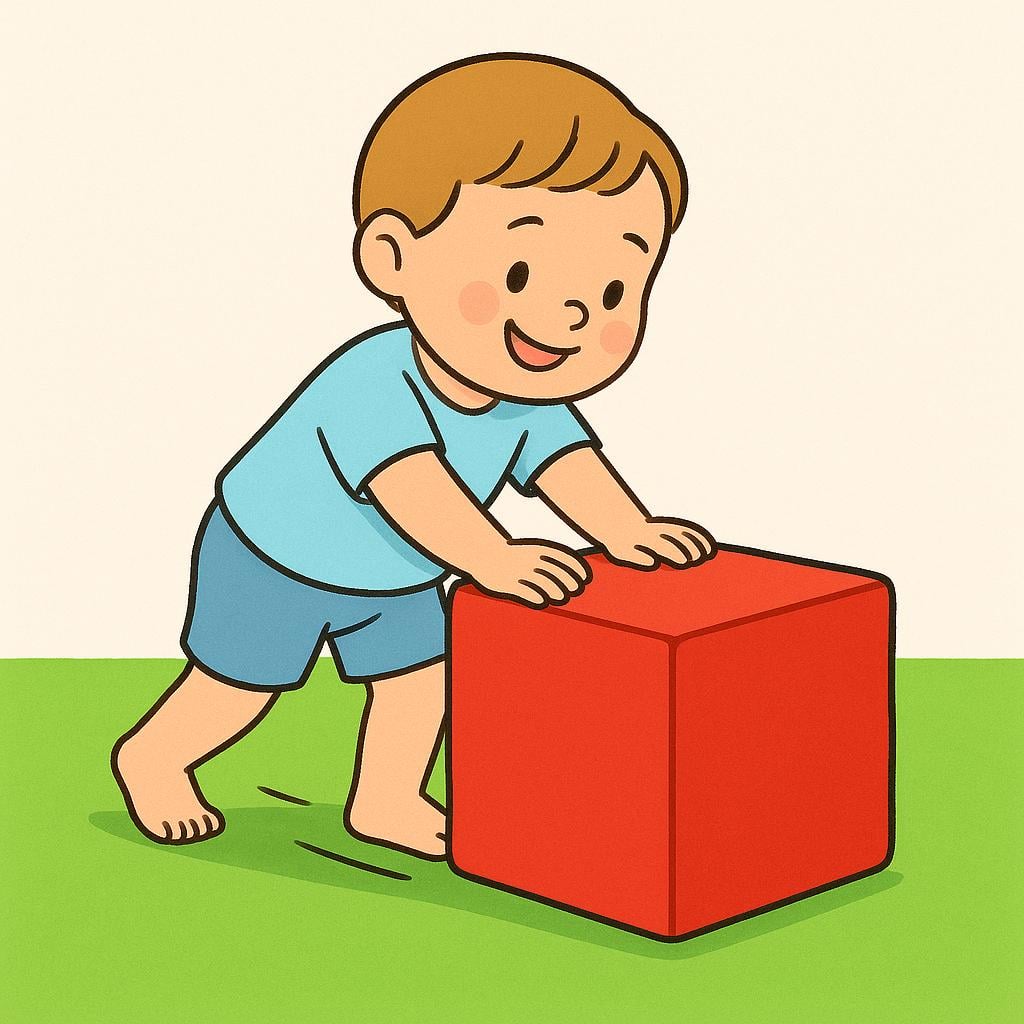mueve
/MOO-eh-veh/
moves (he/she/it/you formal)

When something mueve (moves), it changes position, like this child pushing a block.
mueve(Verb)
moves (he/she/it/you formal)
?Present action
,move!
?Informal command (tú)
stirs
?Mixing liquid
,shakes
?Vibrating
📝 In Action
Mi hermano siempre mueve los muebles de sitio.
A1My brother always moves the furniture around.
Ella mueve la cabeza para decir que no.
A1She moves her head to say no.
¡Mueve esa caja, por favor! Está en el camino.
A2Move that box, please! It's in the way.
💡 Grammar Points
The 'O to UE' Change
In the present tenses, the 'o' in the middle of the verb changes to 'ue' (mOve > mUEve). This change happens everywhere EXCEPT the 'nosotros' and 'vosotros' forms.
❌ Common Pitfalls
Forgetting the Stem Change
Mistake: "Él mova la mesa."
Correction: Él mueve la mesa. (Remember that 'o' changes to 'ue' in this form.)
⭐ Usage Tips
Reflexive Use
To say 'to move oneself' (like changing location or getting exercise), use 'moverse' (e.g., 'el coche se mueve' - the car moves).

To mueve (motivate) someone is to give them the drive or reason to act, like a runner driven toward the finish line.
mueve(Verb)
motivates
?Provides reason/drive
,stirs
?Affects emotions
inspires
?Encourages action
📝 In Action
Su discurso mueve a la gente a pensar en el futuro.
B1His speech moves people to think about the future.
¿Qué te mueve a tomar decisiones tan arriesgadas?
B2What motivates you to make such risky decisions?
💡 Grammar Points
Figurative Preposition 'A'
When 'mueve' means 'motivates' or 'causes,' it is usually followed by the preposition 'a' before the next action: 'mueve [a alguien] a [hacer algo].'
⭐ Usage Tips
Formal Context
This figurative use often appears in newspaper articles, speeches, or formal discussions about philosophy or social issues.
🔄 Conjugations
indicative
present
imperfect
preterite
subjunctive
present
imperfect
✏️ Quick Practice
💡 Quick Quiz: mueve
Question 1 of 2
Which of the following is the correct informal command (tú) to tell your friend to stop moving?
📚 More Resources
Frequently Asked Questions
Why does the word 'mueve' have an 'ue' sound when the infinitive is 'mover'?
This is a common feature in many Spanish verbs called a 'stem change.' The 'o' in the verb's root changes to 'ue' when it is stressed, which happens in most of the present tense forms (like 'muevo,' 'mueves,' 'mueve,' 'mueven').
Is 'mueve' the same as 'se mueve'?
No, they are different! 'Mueve' means 'he/she/it moves [something else]' (like 'he moves the chair'). 'Se mueve' means 'he/she/it moves [itself]' (like 'the car moves' or 'she is exercising').